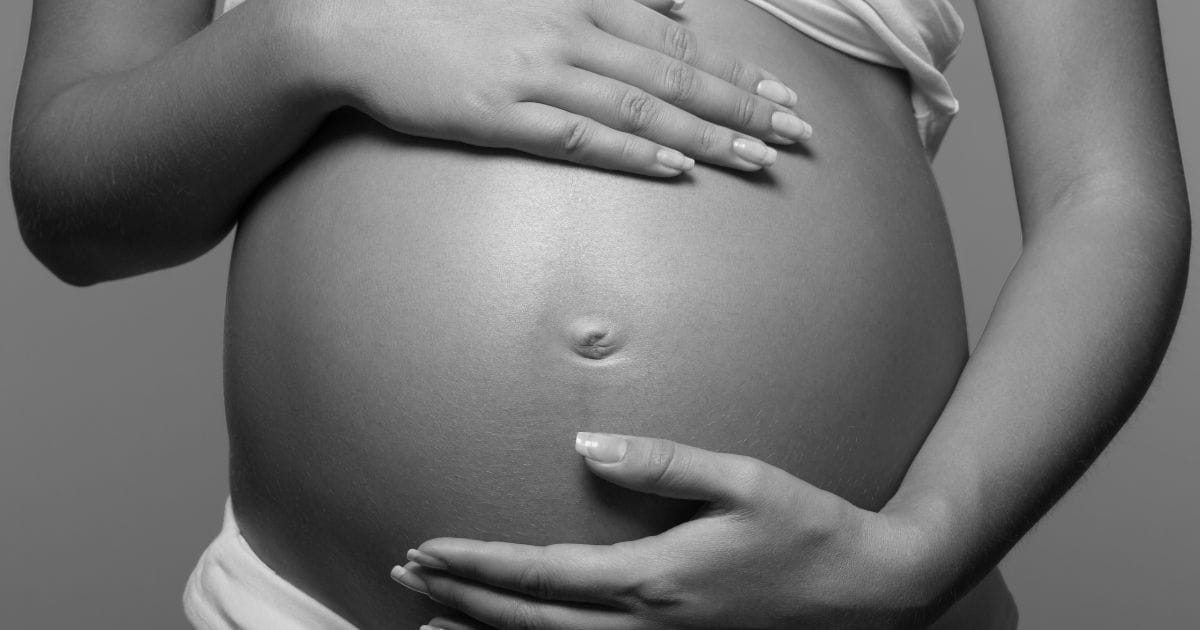A new study challenged the accuracy of public health data on deaths related to pregnancy and childbirth — and the narrative of high and rising U.S. maternal mortality rates. An unusual public dispute has ensued.
An unusual public dispute has erupted among leading maternal health experts over whether the striking rise of U.S. maternal mortality rates over the past two decades was the real deal — or a statistical mirage.
The challenge to what has been a long-held view among public health officials came from researchers behind a new study published in the American Journal of Obstetrics & Gynecology.
The study concluded that maternal death rates put out by the Centers for Disease Control and Prevention have been substantially inflated by misclassified data. Using an alternate way of counting deaths related to pregnancy and childbirth, the study found, U.S. maternal mortality rates would be far lower than have been reported. And they’d be stable, not rising.
The pushback followed soon after.
The CDC said it disagreed with the study’s findings and criticized the researchers’ methodology as a recipe for undercounting maternal deaths. The American College of Obstetricians and Gynecologists criticized the study for painting an “incomplete picture.”
“To reduce the U.S. maternal mortality crisis to an ‘overestimation’ is irresponsible and minimizes the many lives lost and the families that have been deeply affected,” Dr. Christopher Zahn, the group’s interim CEO, said in a written statement.
ProPublica has been writing since 2017 about what maternal health experts condemned as unacceptably high numbers of deaths and near-deaths related to pregnancy and childbirth. Our series, “Lost Mothers,” examined how most maternal deaths are preventable and how obdurate racial disparities cause Black mothers to die at far higher rates. The disproportionate toll on Black women is one point on which the CDC and the new study agree.
We also wrote about how flaws in data collection had made it challenging to understand how U.S. maternal mortality rates were changing, as well as how American outcomes compared with those of other wealthy countries.
The landscape has changed in critical ways since then. More than 20 states have banned or restricted access to abortion since the U.S. Supreme Court overturned Roe v. Wade in 2022; studies have shown that maternal mortality rates are higher in these states.
Thus it seems all the more urgent to revisit some key questions about this marker of reproductive health.
Why is it so hard to pin down how many American women die as a consequence of pregnancy and childbirth?
Health officials rely on information from death certificates to track maternal deaths. These crucial documents are filled in by doctors, turned in to state and local vital statistics offices, then funneled to epidemiologists at the CDC.
The cause-of-death information in these records has always been prone to error and often is incomplete. In the case of maternal deaths, death certificates often aren’t filled out by OB-GYNs or anyone trained to recognize a connection to pregnancy or childbirth.
The simplest cases involve deaths that result directly from pregnancy, labor or postpartum complications. But pregnancy also can interact with a mother-to-be’s preexisting health conditions or cause new ones, figuring into fatalities in ways that death certificates sometimes don’t reflect.
For many years, research showed substantial numbers of maternal deaths were being missed — possibly as many as half. To fix this, starting in 2003, states began phasing in a revised death certificate that added a checkbox question asking whether the person who died, if female, was pregnant at the time or within a year of death.
After states added the pregnancy checkbox, they often saw their rates of maternal deaths double, experts told ProPublica. This eliminated the undercount, but it also brought so-called false positives: deaths counted as related to pregnancy or childbirth that really weren’t. This was particularly a problem among women over 40.
The CDC highlighted these issues in several reports. In one, it found that 147 decedents over 85 had been identified as pregnant when they died or within the previous year, according to 2013 checkbox data. In another, it analyzed a sample of 2014 and 2016 maternal deaths identified via the checkbox, comparing their death certificates to hospital records; more than half the deaths were potentially false positives, the agency concluded.
In 2018, the agency made changes to improve data quality, among them that the pregnancy checkbox wouldn’t be used for women who died at ages 45 and older. Last year, the CDC took another step designed to wring out errors, requiring states to start verifying checkbox information on a subset of records.
The new study’s authors — a dozen researchers based mostly in Canada — say the tweaks haven’t gone far enough. They propose an alternative way of counting in which deaths are classified as maternal only if at least one cause of death listed on the death certificate specifically mentions pregnancy.
Classifying deaths as maternal without this kind of evidence, based solely on the pregnancy checkbox, undermines “the very purpose of surveillance,” lead author Dr. K.S. Joseph, a physician and epidemiologist at the University of British Columbia, said in an interview.
“If we are to use this cause-of-death information to institute clinical and public health programs aimed at preventing maternal death, we need proper cause of death information,” he said.
He wasn’t surprised that the study kicked off a firestorm: “The dominant narrative is that the U.S. has a maternal mortality crisis,” he wrote in a follow-up email. “So it’s not unexpected that a study such as ours is met with skepticism, at least initially.”
He said the researchers were confident that their findings were accurate and that the narrative would change.
The CDC, however, challenged the study’s approach, arguing it would miss many maternal deaths.
One example: a mother-to-be who dies from hypertension. The checkbox should catch this, ensuring the death would be counted as maternal. Using the study’s method, the death might be missed if whoever fills out the death certificate gives the cause as hypertension without adding the connection to pregnancy.
“Capturing these otherwise unrecorded maternal deaths is critical to understanding the scope of maternal mortality in the United States and taking effective public health action to prevent these deaths,” the CDC said in an emailed statement.
Joseph agreed his study’s method likely does underestimate maternal death rates. “But it is the best available method to answer the question of whether rates have increased over the last 20 years,” he said.
So are U.S. maternal mortality rates rising or not?
The CDC’s National Center for Health Statistics didn’t publish an official U.S. maternal mortality rate for more than a decade — from 2007 to 2018 — as states transitioned to using death certificates including the pregnancy checkbox.
The CDC’s rate for 2018 — 17.4 deaths per 100,000 live births — was considerably higher than the 12.7 rate for 2007, an increase the agency attributed largely to changes in data collection. But it’s less clear how much of that was driven by errors versus accurately counting maternal deaths that previously had been missed.
The agency’s rates edged up again in 2019 and 2020, then leaped to almost 33 deaths per 100,000 live births in 2021. Some of this reflected the pandemic: A quarter of maternal deaths in 2020 and 2021 were associated with COVID-19, a report by the Government Accountability Office found.
The new study compares two four-year periods: 1999 to 2002 (before the checkbox) and 2018 to 2021 (after).
Using the CDC’s way of counting, the maternal mortality rate more than doubled over that time frame, from about 9.7 deaths per 100,000 live births in the first period to 23.6 deaths per 100,000 live births in the second one, the study finds.
Using the researchers’ formula, by contrast, maternal deaths stayed essentially flat from the first period to the second, going from 10.2 deaths per 100,000 live births to 10.4 deaths per live births.
Some of the authors’ findings echo those of other researchers. For example, they found that deaths from direct obstetrical causes, such as preeclampsia and postpartum hemorrhage, decreased over time.
There have been other studies that reached similar conclusions, including one showing the rate of pregnant women who died delivering children in the hospital dropped by more than half from 2008 through 2021.
Still, the CDC’s mortality data experts say they have the fundamental trend line right, particularly since the checkbox-related changes in 2018.
“We feel fairly confident that there has been an increase [in maternal mortality], particularly during the pandemic,” Robert Anderson, chief of mortality statistics for the CDC, told CNN. “We went from underestimating to overestimating, so we had to make that correction. But I feel fairly confident that the increases since 2018 are real.”
What about the data on racial disparities — does this hold up?
Whatever method you use to calculate maternal death rates, Black women still have a substantially higher risk of dying as a result of pregnancy or childbirth.
Data from the CDC shows that for each year from 2018 to 2021, Black women have maternal mortality rates double that of women overall and 2.5 to 3 times higher than white women.
The new study, using its alternative method for counting pregnancy- and childbirth-related deaths, finds similar racial disparities over that period.
How do U.S. maternal mortality rates compare with those of other wealthy countries?
Much of the concern about U.S. maternal death rates has been driven by its outlier status among industrialized countries and that its rates have continued to worsen as rates in many wealthy nations improved.
The 2021 rate reported by the CDC was several times those of countries like Australia and Switzerland and topped those of many middle-income countries.
By the new study’s yardstick, U.S. maternal mortality rates look considerably better — similar to those of Canada and the United Kingdom though still higher than those of many other wealthy countries.
To allow rates to be compared internationally, countries around the world, including the U.S., use the World Health Organization’s definition of maternal mortality.
But they often have very different systems for tracking deaths and checking the accuracy, consistency and comprehensiveness of vital statistics data. The U.K. is considered the gold standard when it comes to maternal deaths, conducting in-depth investigations into every single one.
While the new study says the CDC has been overestimating U.S. maternal mortality rates, some health experts have argued there are pregnancy-related deaths that aren’t captured by the agency’s data but should be.
The maternal mortality rate excludes deaths by suicide or caused by “accidental or incidental” causes, including drug overdoses. It also doesn’t include maternal deaths that occur more than 42 days after giving birth. In the U.S., about 30% of pregnancy-related deaths are happening from 43 days to 365 days after delivery, a CDC report said.
“These are all issues that clinicians and public health people need to debate and to address,” Joseph said. “But we haven’t done it as yet.”
ProPublica is a nonprofit newsroom that investigates abuses of power. Sign up to receive our biggest stories as soon as they’re published.
This article originally appeared on ProPublica.






